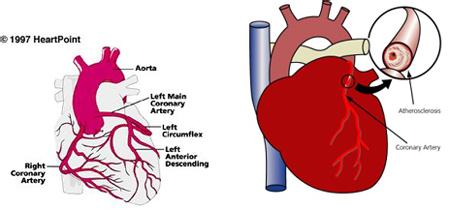业内新闻
治疗稳定型冠心病:药物联合PCI无优势

12月2日在线发表于《美国医学会杂志·内科学》(JAMA Intern Med)的一项荟萃分析表明,在伴有客观心肌缺血的稳定型冠心病患者中,与单纯药物治疗相比,经皮冠脉介入治疗(PCI)联合药物治疗并不能减少死亡、非致命性心梗、计划外血运重建和心绞痛的发生。该研究表明,对于应激试验或冠脉血流储备分数检查证实缺血的患者,PCI并不比药物治疗更有效。[JAMA Intern Med 2013 Dec 2;[Epub ahead of print] PMID:24296791]
研究简介
当前有许多患者接受冠脉血运重建手术,但至少在稳定性冠心病患者中手术依据受到部分学者质疑。为此美国石溪医学院Kathleen Stergiopoulus博士进行了一项荟萃分析。研究者检索了Medline、Cochrane和PubMed数据库和相关未发表资料,回顾了近40年关于稳定型冠心病患者接受PCI或者药物治疗的随机试验,应用支架和他汀类药物治疗的患者需超过50%,共纳入5项试验(n=5286),包括2004年德国一项小型研究、MASSII、COURGAGE、BARI2D和FAME2研究。
经运动试验、核素或超声应激影像或FFR检查发现共4064例患者存在缺血。随访时间为231天至5年之间,中位随访时间为5年。
结果显示,药物治疗与PCI治疗患者的死亡率、非致命性心梗、计划外血运重建和心绞痛没有差异。(表)
表 研究结果:PCI联合药物治疗组/单纯药物治疗组预后比较
预后 PCI联合药物治疗组/单纯药物治疗组 比值比 95% CI
死亡 6.5% / 7.3% 0.90 0.71–1.16
非致命性MI 9.2% / 7.6% 1.24 0.99–1.56
计划外血运重建 18.3% / 28.4% 0.64 0.35–1.17
心绞痛 20.3% / 23.3% 0.91 0.57–1.44
研究者在论文中写道,“这项荟萃分析独一无二,是第一项对心肌缺血患者接受PCI、二级预防治疗的荟萃分析。研究结果有力地表明,经导管血运重建治疗阻塞性、血流降低的冠脉狭窄,其缺血和死亡率并未改善或减轻。”
研究评论
盖辛格健康系统Peter Berger教授:
毫无疑问,PCI对于缓解症状比药物治疗更有效:心绞痛症状越严重,PCI的优势越明显。该荟萃分析纳入的大多数研究记录了缺血数据,但是没有报告心绞痛发作频率或者严重程度的基线数据。对于心绞痛程度低及无症状性心肌缺血的患者,PCI不会显著改善病情,因此不能更好地显示出获益,已明确PCI并不减少这类患者死亡或心肌梗死的风险。
我非常赞同作者的观点,因为严重缺血已被证明与较差的长期预后有关,减少缺血负担与死亡或心梗风险降低没有必然联系。在大多数稳定型冠心病患者,确实没有减少风险。
美国纽约州立大学石溪医学院David Brown博士:
长久以来,心脏病学界在寻找不良预后的标志物,然后处理这个标志物,仿佛它就是不良预后的原因。缺血患者的预后比非缺血患者差,因此对缺血患者进行PCI治疗。根据应激试验阳性结果而进行PCI,其处理的并不一定是真正的缺血区域。现在医学界注重寻找和治疗缺血部位,我认为这种做法欠妥,这项荟萃分析数据也证实了我的判断。
该荟萃分析没有区分患者缺血的范围和大小,也许这将是差异所在。目前正在进行中的ISCHEMIA试验(约8000例患者)或许能给人更多信息。应激试验和FFR检查发现缺血就进行导管术血运重建,如果不能改善预后,我们为什么那样做呢?我认为这需要重新慎重考虑。
编译自:PCI No Benefit Over Medical Therapy inIschemic Stable CAD. Heartwire. December 02, 2013
参考文献:
Percutaneous Coronary Intervention Outcomes in Patients With Stable Obstructive Coronary Artery Disease and Myocardial Ischemia: A Collaborative Meta-analysis of Contemporary Randomized Clinical Trials.
经皮冠状动脉介入治疗患者的预后与稳定的阻塞性冠状动脉疾病,心肌缺血的协作荟萃分析当代的随机临床试验。
Stergiopoulos K,Boden WE,Hartigan P,M?bius-Winkler S,Hambrecht R,Hueb W,Hardison RM,Abbott JD,Brown DL
JAMA internal medicine 2013 Dec 2
PMID:24296791
摘要:
UNLABELLED: IMPORTANCE Myocardial ischemia in patients with stable coronary artery disease (CAD) has been repeatedly associated with impaired survival. However, it is unclear if revascularization with percutaneous coronary intervention (PCI) to relieve ischemia improves outcomes compared with medical therapy (MT). OBJECTIVE The objective of this study was to compare the effect of PCI and MT with MT alone exclusively in patients with stable CAD and objectively documented myocardial ischemia on clinical outcomes. DATA SOURCES MEDLINE, Cochrane, and PubMed databases from 1970 to November 2012. Unpublished data were obtained from investigators. STUDY SELECTION Randomized clinical trials of PCI and MT vs MT alone for stable coronary artery disease in which stents and statins were used in more than 50% of patients. DATA EXTRACTION For studies in which myocardial ischemia diagnosed by stress testing or fractional flow reserve was required for enrollment, descriptive and quantitative data were extracted from the published report. For studies in which myocardial ischemia was not a requirement for enrollment, authors provided data for only those patients with ischemia determined by stress testing prior to randomization. The outcomes analyzed included death from any cause, nonfatal myocardial infarction (MI), unplanned revascularization, and angina. Summary odds ratios (ORs) were obtained using a random-effects model. Heterogeneity was assessed using the Q statistic and I2. RESULTS In 5 trials enrolling 5286 patients, myocardial ischemia was diagnosed in 4064 patients by exercise stress testing, nuclear or echocardiographic stress imaging, or fractional flow reserve. Follow-up ranged from 231 days to 5 years (median, 5 years). The respective event rates for PCI with MT vs MT alone for death were 6.5% and 7.3% (OR, 0.90 [95% CI, 0.71-1.16); for nonfatal MI, 9.2% and 7.6% (OR, 1.24 [95% CI, 0.99-1.56]); for unplanned revascularization, 18.3% and 28.4% (OR, 0.64 [95% CI, 0.35-1.17); and for angina, 20.3% and 23.3% (OR, 0.91 [95% CI, 0.57-1.44]). CONCLUSIONS AND RELEVANCE In patients with stable CAD and objectively documented myocardial ischemia, PCI with MT was not associated with a reduction in death, nonfatal MI, unplanned revascularization, or angina compared with MT alone.